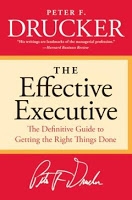Gen-Z has entered the workplace, making up around 24% of the workforce in 2020. And this number will only grow in the coming years. One might assume that this generation may have similar needs compared to previous generations. However, the requirements of this new working generation do vary, begging the question: are employers ready for what Gen-Z expects from the workplace? To satisfy Gen-Z employees, leaders need to understand specifically what this new working generation wants from their leaders. What fuels this generation? And what are the driving forces that steer them to specific places of work versus others?
The eldest of Gen-Z began to work in 2020 amidst the wake of the pandemic and civil unrest. These events awakened a desire for ethical leadership, diversity in the workplace and a high priority for wellbeing. To address these changes, leadership teams must begin conversations to direct how workplace culture will evolve and meet the expectations of this new workforce.
Strengthen ethical leadership
Gen-Z has placed ethical leadership as a top priority, but what exactly does this mean? While it isn’t a new concept, ethical leadership is central to fostering a healthy work culture. It’s more than just centered morals––it sets a clear example of ideal behavior for employees.
Organizations have begun to foster a culture of care, and prospects are watching to ensure they remain accountable, not only when they’re under media scrutiny. And young people aren’t solely looking to organizations for accountability. They’re looking towards the individual leaders and how they make business decisions for the better. Being a role model in and out of the workplace sets an example for employees to model after. Holding accountability and doing what’s right in moments of a crisis not only shows integrity but is reflective to the entire organization. Leading with integrity and responsibility promotes both trust in the company and healthier office culture.
Diversity within the workplace
According to research conducted by The Pew Research Center, Gen-Z is the most ethnically and racially diverse generation. These young adults want their diversity reflected in all aspects of the workplace. This need for diversity is not just limited to race. Diversity in the workplace also means creating an inclusive space for those with disabilities or different sexual or gender orientations.
Not every organization has the ability to employ a designated diversity leader. HR professionals can help navigate improving inclusiveness within the workplace and in the culture itself. Start by creating a culture of inclusivity within hiring. This is where the real opportunity lies in shaping an environment where employees can see their identities mirrored among others. Additionally, creating a Diversity, Equity and Inclusivity committee or hosting organization-wide training sessions will allow for the opportunity to connect and build up the foundation of the organization’s culture. Providing multiple resources for employees creates growth opportunities and improves workplace culture.
Focus on Wellness
Everyone needs a recharge after 2020. The fine line between work and personal life began to blur during the pandemic, leaving many employees feeling burnt out. Gen-Z entered the workforce during this tumultuous time, molding them into agile employees but leaving them wondering about the prioritization of wellbeing at work. Leaders took notice of this need for wellbeing during the pandemic, but how can they continue the momentum?
Both leaders and HR professionals can help address this wellbeing crisis in their workplace.
Simply recognizing employee stress and their ability to overcome recent hardships can go a long way. However, it’s the actions that follow through on well-intentioned thoughts that genuinely matter. In addressing pain-points, note the early signs of burnout that appear in the workplace, such as lack of engagement, decreased motivation and increased errors in work. While burnout cannot be solved by vacation alone, promoting mindfulness and boosting wellness initiatives around mental health literacy can minimize it. Supporting mental health and wellness at work not only uplifts employees but de-stigmatizes conversations around mental health.
While these practices might not show immediate results, HR professionals and leaders can help facilitate meaningful and impactful change.
Business & Finance Articles on Business 2 Community(24)




